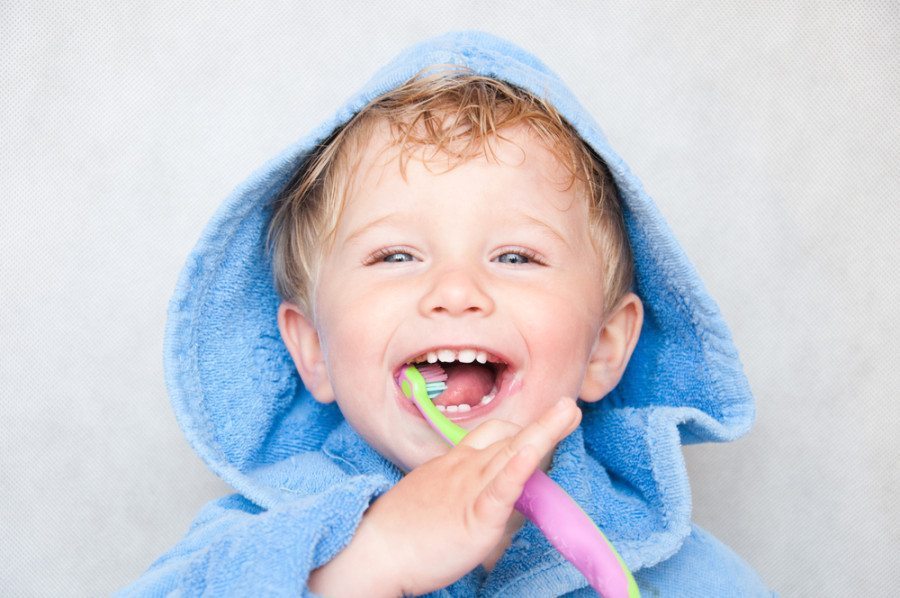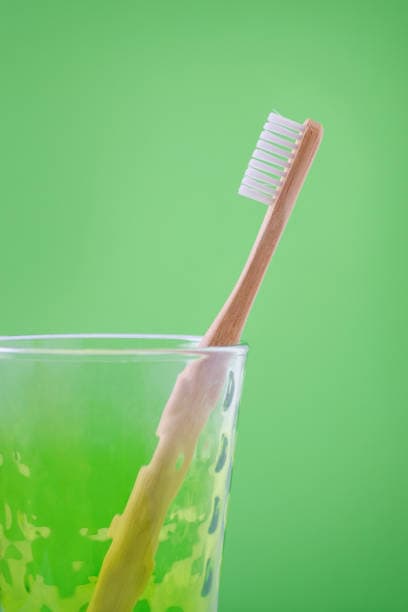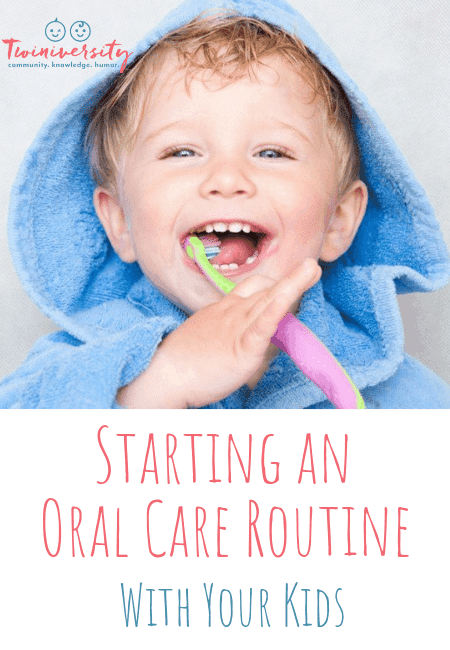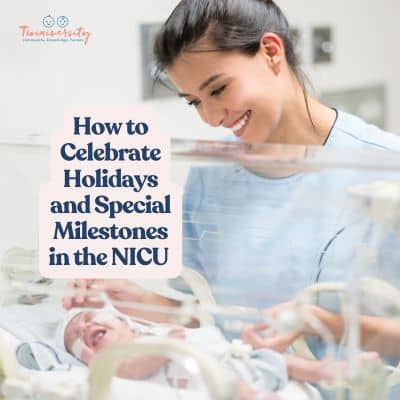Last updated on September 28th, 2021 at 01:36 pm
So your kids sprouted their first teeth months ago and you’ve been avoiding an oral care routine? You’re not alone. When you’ve got twins, adding another chore to an already overstuffed daily routine can really send you over the edge! Or maybe you’ve been putting it off for so long that you’re feeling guilty about it.
I’m here to tell you that it’s never too late to start an oral care routine. Here are some basic tips to get you started with oral care:
- No teeth yet? You can get your baby used to oral care by using a soft microfiber cloth to wipe baby’s gums clean. If you skipped this part, don’t worry, you can still catch up!
- When the first tooth appears, you can start looking for a pediatric dentist. The Academy of Pediatric Dentistry created a consumer portal — mychildrensteeth.org — which is a fantastic resource to answer all your questions on pediatric dentistry. They recommend the first visit to occur “when the first tooth appears, or no later than his/her first birthday.” Studies show that more than 1 in 4 children in the United States has had at least one cavity by the age of 4. Many kids get cavities as early as age 2.
- For babies (once that first tooth has appeared) and up to 2 years, brush once every evening. Use fluoride-free toothpaste and help your child to brush properly. Use a grain-of-rice-size amount of toothpaste.
- For children 2+, brush twice a day, in the morning and before bedtime. Aim to brush for 2 minutes at a time — set a timer or play a favorite song or video to help them learn how long 2 minutes feels. You can switch to a fluoride toothpaste if you are confident your kids won’t swallow (too much of) it. Use a pea-size amount of toothpaste.
- Continue to help your child with brushing as they age, even if it’s just watching them. It’s very easy for kids to slack off on proper brushing technique when no one’s looking.
- Start flossing at age 2, about once a day. This can help avoid early cavities, which are common when baby teeth are set too close together. Using kids flossers is the easiest way to get children to floss.
- Limit gummy candy, licorice, and hard candy, which is are the worst culprits because they get stuck in between teeth very easily. Even chocolate is better than gummy candy, according to our pediatric dentist, because it melts away and doesn’t get stuck.
- Avoid sugary drinks, such as juice and soft drinks, especially before bedtime. Even milk can contribute to tooth decay if your child drinks it before bed. If your child has already brushed and then drinks something containing sugar, have them rinse with water before bed or brush again.
- Teach proper brush prep and care. As your kids age, they can start to put the toothpaste on the brush by themselves, and wash the brush off after brushing. Your kids will enjoy gaining some independence with these new responsibilities.
- Buy new toothbrushes every 3 months. When your kids get sick, either buy new toothbrushes or sterilize their brushes to avoid reinfecting them.
- If your kids resist brushing, try using a reward chart for a week or two as an incentive. Rewards can be stickers, fake tattoos, little toys, etc. If your child has a severe aversion to brushing, it could be an indication of a sensory problem. Talk to your pediatric dentist if this is the case.
A lot of parents are concerned about using pacifiers. According to mychildrensteeth.org, “Thumb and pacifier sucking habits will generally only become a problem if they go on for a very long period of time. Most children stop these habits on their own, but if they are still sucking their thumbs or fingers past the age of three, a mouth appliance may be recommended by your pediatric dentist.” You can rest assured that you can use pacifiers with your twins and it will not create any permanent damage.
Related Articles
Teething Pain Relief for Your Sore Twinnies
6 Tips for Toothbrushing Success with Young Twins
Introduction to Toddler Tooth Brushing










